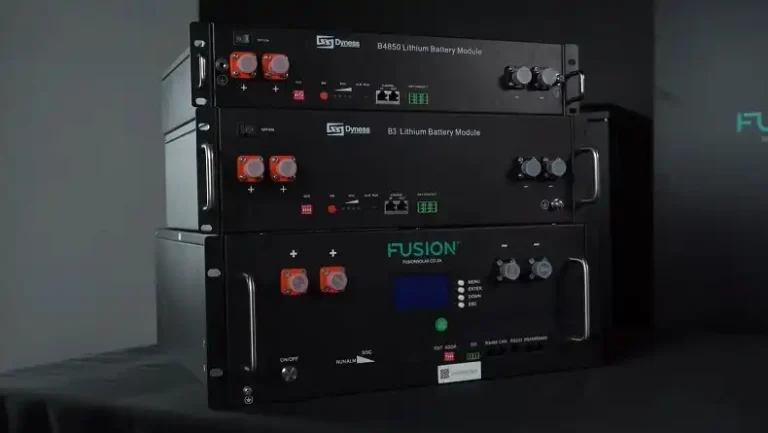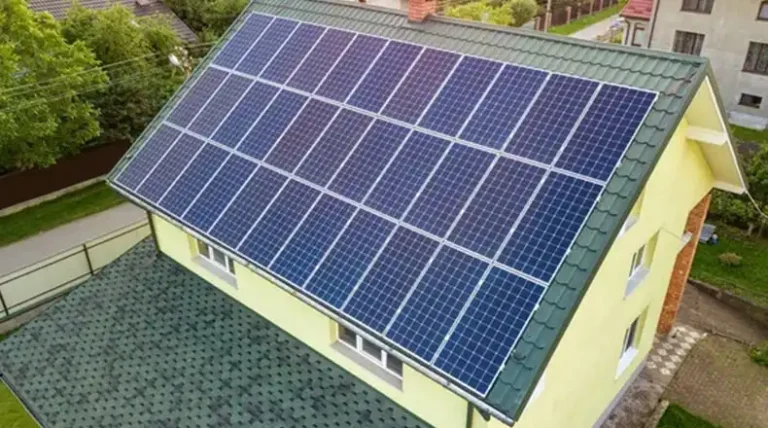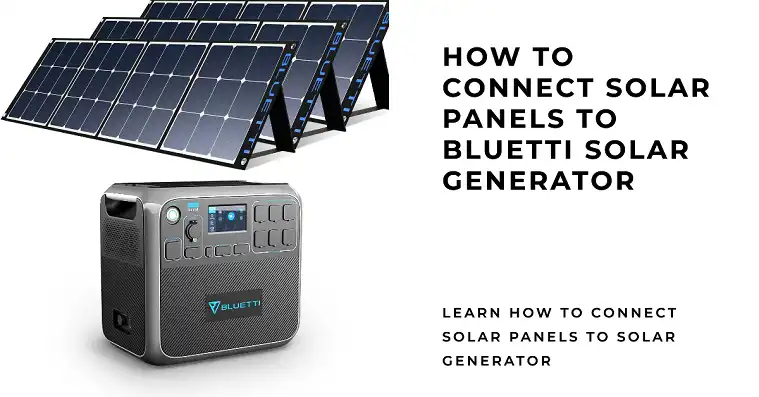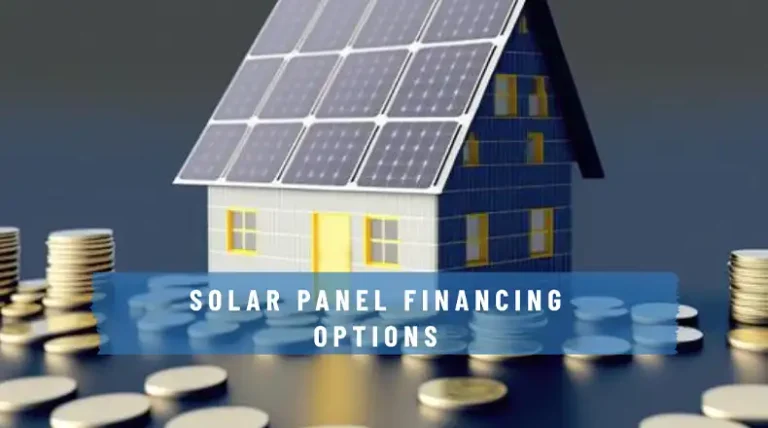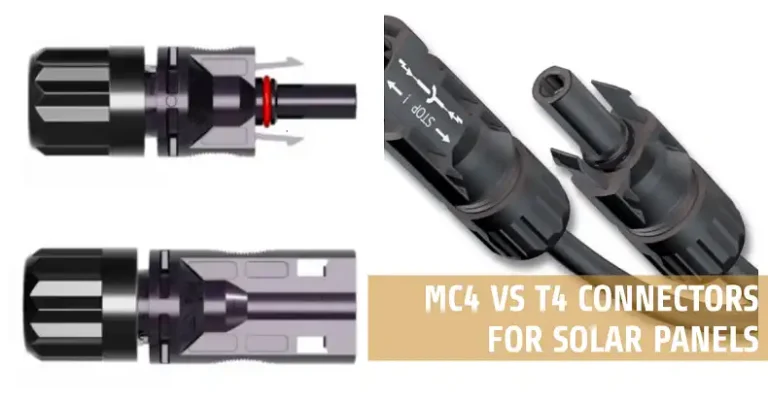Checklist For Solar Panel Financing Options For 2024
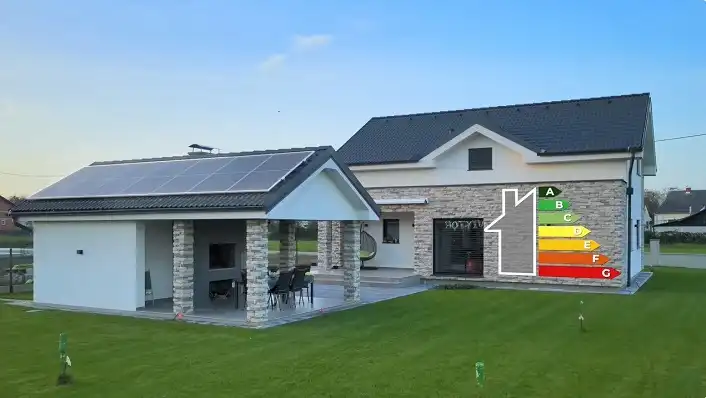
When it comes to installing solar panels on your home, one of the biggest hurdles can be figuring out how to pay for them.
With an average cost of around $22,000 for a typical residential system in 2024, it’s not exactly pocket change for most homeowners.
But don’t let sticker shock deter you from going solar – there are several financing options available that can make this eco-friendly upgrade more affordable.
In this guide, we’ll walk you through a checklist of solar panel financing options to help you determine the best way to fund your solar project.
From cash purchases and solar loans to home equity financing and government programs, we’ll break down the pros and cons of each option so you can make an informed decision.
By the end, you’ll have a clear understanding of how to navigate the solar financing landscape and choose the path that aligns best with your financial goals and energy needs.
Understanding Solar Panel Costs
Before diving into financing options, it’s crucial to have a clear picture of what you’re actually paying for. Solar panel costs have dropped significantly over the years, but they still represent a substantial investment for most homeowners.
Average Costs In 2024
According to recent data from EnergySage, the average cost of installing a 11kW residential solar panel system in 2024 is $22,022 after federal tax credits. This breaks down to about $2 per watt of solar capacity.
However, it’s important to note that this is just an average – your actual costs could be higher or lower depending on various factors.
Factors Affecting Costs
Several elements can influence the final price tag of your solar installation:
- System size: Larger systems generally cost more but may offer greater energy independence.
- Panel quality and efficiency: Higher-end panels with better efficiency rates typically come with a higher price tag.
- Installation complexity: Factors like roof type, angle, and accessibility can affect labor costs.
- Location: Solar panel prices and installation costs can vary significantly by state and even by city.
- Additional equipment: Things like inverters, batteries for energy storage, and monitoring systems can add to the overall cost.
Understanding these cost factors will help you make a more informed decision when exploring financing options.
It’s also worth noting that while the upfront cost might seem high, solar panels are a long-term investment that can significantly reduce or eliminate your electricity bills over time.
Checklist For Solar Panel Financing Options
Now that we have a handle on costs, let’s explore the various ways you can finance your solar panel installation.
Each option has its own set of advantages and considerations, so it’s important to weigh them carefully against your personal financial situation.
1. Cash Purchase
Paying for your solar panels outright with cash is the simplest and most straightforward financing option.
Pros:
- No interest charges or monthly payments
- Immediate ownership of the system
- Maximizes long-term savings on electricity costs
- Eligible for all available tax incentives and rebates
Cons:
- Requires a significant upfront investment
- Ties up a large amount of cash that could be used for other purposes
While a cash purchase might not be feasible for everyone, it’s worth considering if you have the funds available. The lack of interest charges means you’ll see a faster return on your investment through energy savings.
2. Solar Loans
Solar loans are specifically designed to help homeowners finance solar panel installations. These can be obtained through banks, credit unions, solar installers, or online lenders.
Pros:
- Little to no money down in many cases
- Fixed monthly payments make budgeting easier
- You own the system and qualify for tax incentives
- Can be unsecured (no collateral required) or secured by your solar panels
Cons:
- You’ll pay interest, increasing the overall cost of your system
- May require a good credit score to qualify for the best rates
- Loan terms can range from 5 to 20 years, affecting your monthly payment amount
Solar loans can be a great middle ground for those who want to own their system but can’t pay the full amount upfront. Be sure to shop around for the best rates and terms.
3. Home Equity Financing
If you have significant equity in your home, you might consider using it to finance your solar panels through a home equity loan or line of credit (HELOC).
Pros:
- Generally lower interest rates compared to personal loans
- Interest may be tax-deductible as a home improvement expense
- Potential for longer repayment terms, resulting in lower monthly payments
Cons:
- Your home serves as collateral, putting it at risk if you default on payments
- May have closing costs or fees associated with the loan
- Reduces your home equity
Home equity financing can be an attractive option if you have a good amount of equity and are comfortable using your home as collateral. The lower interest rates can lead to significant savings over the life of the loan.
4. Government Loan Programs
Several government-backed loan programs can help finance solar panel installations:
- FHA 203(k) loans: These allow you to roll the cost of solar panels into a new mortgage or refinance.
- Fannie Mae HomeStyle Energy mortgage: Similar to the FHA 203(k), but with potentially better rates for those with good credit.
- PACE (Property Assessed Clean Energy) financing: Available in some states, this ties the solar loan to your property taxes.
Pros:
- Often have competitive interest rates
- May have more lenient credit requirements
- Can be combined with other energy-efficient home improvements
Cons:
- May have stricter qualification requirements
- Could have longer approval processes
- Not all programs are available in every state
Government loan programs can be a good option if you’re already planning to refinance or if you don’t qualify for traditional financing methods.
5. Contractor Financing
Many solar installation companies offer their own financing options, often through partnerships with lenders.
Pros:
- Convenient one-stop shop for installation and financing
- May offer promotional rates or terms
- Can sometimes be approved quickly
Cons:
- May not always offer the best rates compared to shopping around
- Terms and conditions can vary widely between contractors
- Might pressure you into a decision before you’ve fully explored all options
While contractor financing can be convenient, it’s important to compare their offers with other financing options to ensure you’re getting the best deal.
Key Considerations for Each Financing Option
When evaluating solar panel financing options, there are several important factors to consider. Let’s break down the key points for each option:
Interest Rates And Fees
- Cash purchase: No interest or fees, but consider the opportunity cost of using a large sum of cash.
- Solar loans: Compare APRs (Annual Percentage Rates) and watch out for origination fees. Rates typically range from 3.99% to 16.99%, depending on your credit score and loan term.
- Home equity financing: Generally lower rates than personal loans, but may include closing costs or annual fees for HELOCs.
- Government loans: Often have competitive rates, but may include mortgage insurance premiums (for FHA loans) or administrative fees.
- Contractor financing: Rates can vary widely, so compare with other options. Be wary of “zero interest” offers that may have hidden fees or inflate the system cost.
Repayment Terms
- Cash purchase: No repayment necessary.
- Solar loans: Terms typically range from 5 to 20 years. Longer terms mean lower monthly payments but more interest paid overall.
- Home equity financing: Can offer terms up to 30 years, potentially lowering monthly payments significantly.
- Government loans: Terms vary by program but can be quite long (up to 30 years for some FHA loans).
- Contractor financing: May offer shorter terms (1-7 years) or match other loan options with 10-20 year terms.
Tax Incentives And Rebates
- Cash purchase & loans: Eligible for the 30% federal solar tax credit and any state or local incentives.
- Home equity financing: Eligible for solar incentives, plus potential tax deductions on interest payments.
- Government loans: Typically eligible for all solar incentives.
- Contractor financing: Usually eligible for incentives, but confirm with the contractor.
Remember, to claim the federal tax credit, you must own the system (not lease it).
Ownership And Maintenance Responsibilities
- Cash purchase & loans: You own the system outright and are responsible for maintenance and repairs.
- Home equity financing: Same as cash/loans, but your home is collateral.
- Government loans: You own the system, but there may be specific maintenance requirements to keep the loan in good standing.
- Contractor financing: Usually, you own the system, but some offers might be disguised leases. Always clarify ownership terms.
Evaluating Your Financial Situation
Before deciding on a financing option, it’s crucial to take a close look at your current financial situation and future goals. This evaluation will help you determine which financing route aligns best with your circumstances.
1. Current Energy Costs
Start by reviewing your recent electricity bills. Calculate your average monthly and annual electricity costs. This will give you a baseline to compare against potential savings from solar panels.
For example, if your average monthly electricity bill is $150, you’re spending about $1,800 per year on electricity. Over 25 years (the typical lifespan of solar panels), that’s $45,000 in electricity costs, not accounting for potential rate increases.
2. Available Cash And Credit
Assess your current financial resources:
- Cash reserves: Do you have enough savings to consider a cash purchase without depleting your emergency fund?
- Credit score: Check your current credit score. A higher score can qualify you for better loan terms and lower interest rates.
- Debt-to-income ratio: Lenders typically prefer a DTI ratio of 36% or less. Calculate yours by dividing your monthly debt payments by your gross monthly income.
- Home equity: If you’re considering a home equity loan or HELOC, determine how much equity you have in your home. Most lenders require at least 15-20% equity.
3. Long-Term Plans For Your Home
Consider your future plans:
- How long do you plan to stay in your current home? If you’re planning to move within a few years, a long-term financing option might not be the best choice.
- Are you planning other major home improvements? You might want to consider bundling solar installation with other projects under a single loan.
- Retirement plans: If you’re nearing retirement, how will fixed loan payments fit into your future budget?
Remember, the goal is to choose a financing option that not only makes solar panels affordable now but also maximizes your long-term savings and fits comfortably within your overall financial plan.
Calculating Potential Savings
Understanding the potential savings from your solar panel investment is crucial in determining whether the financing option you’re considering makes financial sense. Let’s break down two key concepts: payback period and long-term energy cost reduction.
Payback Period
The payback period is the amount of time it takes for your energy savings to equal the cost of your solar panel system. To calculate this:
- Determine your total system cost after incentives and rebates.
- Estimate your annual energy savings (your current annual electricity cost minus any remaining electricity costs with solar).
- Divide the system cost by annual savings.
For example:
- System cost after incentives: $15,000
- Annual energy savings: $1,500
- Payback period: $15,000 / $1,500 = 10 years
According to SolarReviews, the average payback period is about 10 years. However, this can vary based on your location, energy usage, and the specifics of your solar system.
Long-Term Energy Cost Reduction
While the payback period is important, the real value of solar panels comes from long-term savings. To estimate these:
- Calculate total energy costs without solar over 25 years (panel lifespan).
- Subtract your solar system costs (including financing).
- The difference is your potential savings.
For example:
- 25-year energy costs without solar: $45,000 (assuming no rate increases)
- Solar system cost with financing: $20,000
- Potential 25-year savings: $25,000
Additional Factors To Consider
While the financial aspects are crucial, there are several other factors to keep in mind when deciding on solar panel financing:
Local Solar Incentives
In addition to the federal solar tax credit, many states, cities, and utility companies offer their own incentives for solar installation. These can significantly reduce your overall costs and impact your financing decision.
- State tax credits: Some states offer additional tax credits on top of the federal credit.
- Cash rebates: Offered by some states, municipalities, or utilities.
- Solar Renewable Energy Certificates (SRECs): In some states, you can sell excess energy back to the grid.
- Performance-based incentives: Payments based on the energy your system produces.
Check the Database of State Incentives for Renewables & Efficiency (DSIRE) for a comprehensive list of incentives in your area.
Impact On Home Value
Installing solar panels can increase your home’s value, which is an important consideration, especially if you’re using home equity to finance the project.
According to a 2019 Zillow study, homes with solar panels sell for 4.1% more on average than comparable homes without solar. However, the exact increase can vary based on location and other factors.
Keep in mind that while owned solar panels typically increase home value, leased systems might complicate a future home sale.
Leasing Vs. Buying
While this guide focuses on financing options for purchasing solar panels, leasing is another option to consider:
Pros of leasing:
- Lower upfront costs
- Maintenance often included
- Can be a good option if you don’t qualify for tax incentives
Cons of leasing:
- Lower long-term savings
- No eligibility for tax credits or rebates
- Can complicate selling your home
Generally, buying is more cost-effective in the long run if you can manage the upfront costs or qualify for favorable financing.
Future Technology Improvements
Solar technology is continually improving. While it’s generally not worth waiting for future improvements (as you’ll miss out on years of savings), it’s worth considering how flexible your chosen financing option is.
For example, if you think you might want to upgrade your system in the future, a shorter-term loan might be preferable to a 20-year commitment.
Grid Reliability And Net Metering Policies
Consider your local electricity grid’s reliability and policies regarding net metering (selling excess power back to the grid). These factors can affect your potential savings and the overall value of your solar investment.
By taking these additional factors into account, you can make a more holistic decision about solar panel financing that considers not just the immediate financial impact, but also long-term benefits and potential future scenarios.
Final Words
By carefully considering the financing options outlined in this checklist, homeowners and businesses can make informed decisions about powering their properties with solar energy.
Evaluating factors such as upfront costs, monthly payments, ownership, and potential incentives is crucial to selecting the most suitable financing approach.
Ultimately, the ideal financing solution will depend on individual financial circumstances, long-term goals, and the specific characteristics of the solar project.

